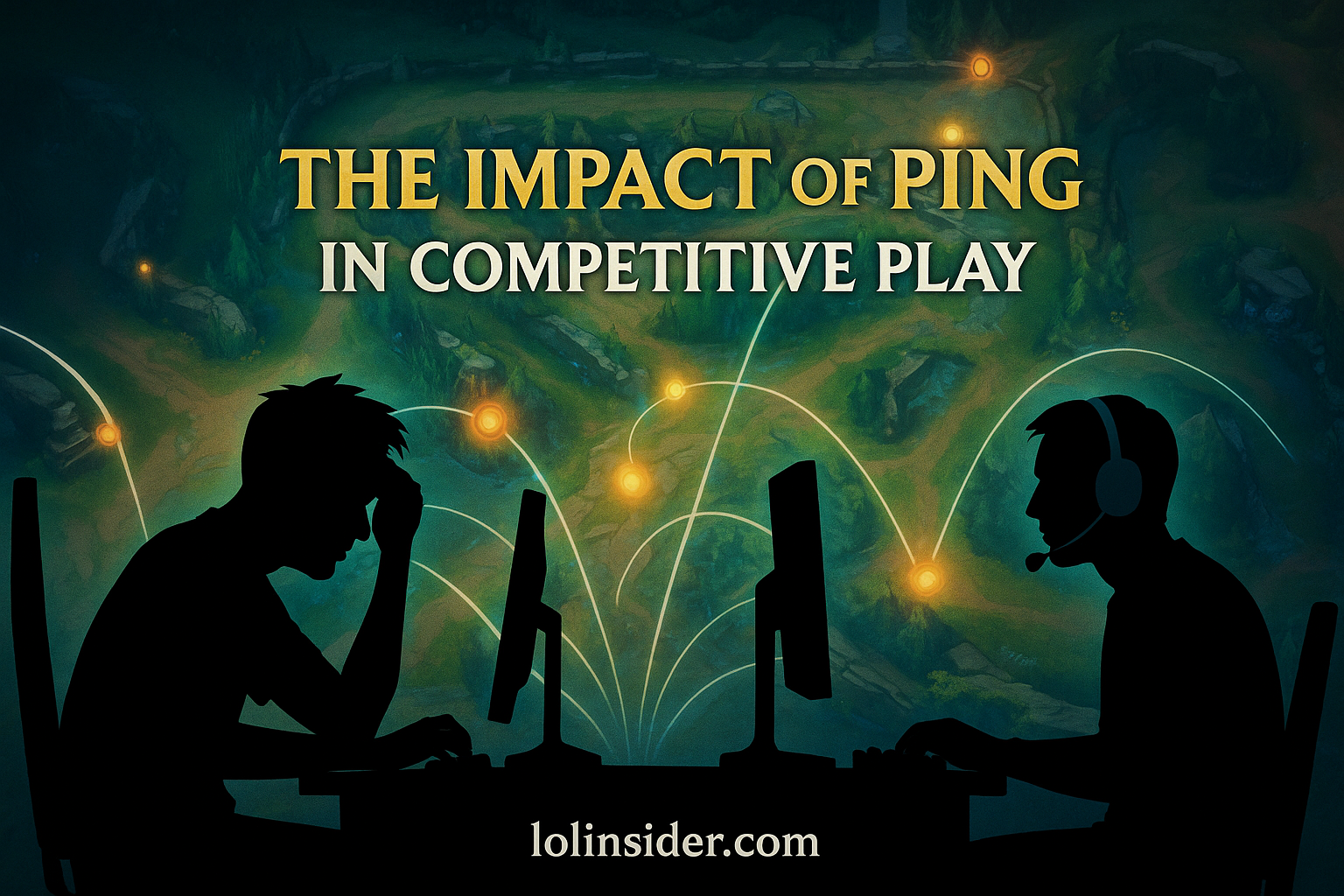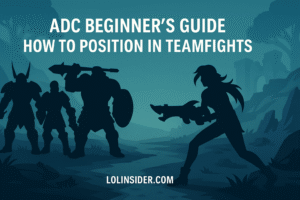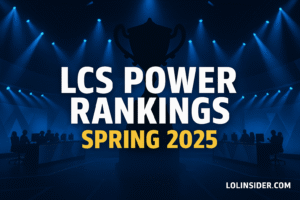The impact of ping in competitive play cannot be overstated, especially in a game as fast-paced and reaction-dependent as League of Legends. Whether you’re climbing the ranked ladder or competing in high-stakes tournaments, the difference between 20 ms and 100 ms ping can decide if you land that clutch skill shot, secure Baron, or survive a gank.
Ping — the time it takes for your input to travel to the game server and back — is the invisible force that dictates how responsive your gameplay feels. A high ping can make you miss opportunities, delay your reactions, and even tilt you into making poor decisions. In competitive environments, where milliseconds separate victory from defeat, understanding ping and how to manage it is essential.
In this in-depth guide, we’ll explore:
- What ping and latency mean in gaming
- How ping affects competitive League of Legends matches
- Regional ping disparities in esports tournaments
- The psychology of playing with high ping
- Strategies and tools to reduce ping
- Pro player insights on playing under high-latency conditions
- The future of ping with new technologies
By the end, you’ll understand not only why ping matters but also how to minimize its effects on your ranked games or competitive matches.
Chapter 1: What is Ping in Gaming?
Before we dive into its impact, let’s break down what ping really means in the context of online gaming.
- Definition: Ping measures the round-trip time (RTT) it takes for data to travel from your computer to the game server and back, usually measured in milliseconds (ms).
- Low Ping (0–50 ms): Almost no delay. Actions feel immediate, and gameplay is smooth.
- Medium Ping (50–100 ms): Slight delay, but still manageable for most players. Some skill shots may feel a bit sluggish.
- High Ping (100–200+ ms): Noticeable lag, harder to react to enemy abilities, and greater chance of missed opportunities.
- Very High Ping (200 ms+): The game becomes nearly unplayable. Delays in movement, abilities, and reactions lead to frequent mistakes.
Ping is often confused with frames per second (FPS), but they are very different. FPS measures how many images your computer can display per second, while ping is about network response time. A player can have high FPS but terrible ping — meaning the game looks smooth but still feels delayed.
Chapter 2: Why Ping Matters in Competitive League of Legends
In casual games, a small amount of lag might be frustrating but manageable. In competitive play, however, where every millisecond counts, the impact of ping in competitive play can make or break matches.
2.1 Reaction Time and Skill Shots
- Champions like Lee Sin, Thresh, Blitzcrank, and Nidalee rely on precise ability timing. A 100 ms delay can make the difference between landing a game-changing hook or missing completely.
- Dodging skill shots is equally affected. If you see a Lux binding or a Xerath ultimate a fraction of a second too late, you may not react in time.
2.2 Combos and Mechanics
- Champions such as Riven, Yasuo, and Azir rely heavily on animation canceling and frame-perfect inputs. High ping can break these combos, lowering DPS and making the champion feel clunky.
- This makes certain champions “region-locked” — for example, Yasuo and Lee Sin are far more effective in low-ping environments like Korea than in regions with higher latency.
2.3 Objective Control
- Baron steals, Dragon smites, and Rift Herald fights often come down to milliseconds of reaction time.
- At high ping, your smite may land too late, giving the enemy jungler a free win condition. In professional play, this can be the difference between advancing to Worlds or going home.
2.4 Macro Decisions Under Pressure
- When players experience lag, frustration builds up. This often leads to tilt, poor shot-calling, and bad decision-making.
- Competitive teams rely heavily on crisp communication and synchronized plays. A single player lagging behind disrupts the entire team’s tempo.
Chapter 3: The Regional Impact of Ping in Esports
One of the biggest issues with the impact of ping in competitive play comes from international tournaments. League of Legends is played worldwide, but servers are region-locked.
3.1 Domestic Ping vs International Ping
- In domestic leagues (LCS, LEC, LCK, LPL), players typically play on local servers with 5–15 ms ping.
- In international tournaments like Worlds or MSI, matches are usually played on LAN servers to eliminate ping disadvantages. However, online qualifiers and scrims often involve cross-region connections, creating latency disparities.
3.2 The Ping Controversies
- At MSI 2022, there was major controversy when ping issues in remote matches affected results. Riot attempted to simulate a 35 ms ping for fairness, but players reported inconsistencies.
- Teams from regions closer to the tournament servers often enjoy smoother gameplay, while distant regions like Latin America or Oceania struggle.
3.3 The Competitive Integrity Debate
Ping has become a hot topic in esports forums and broadcasts. Players argue that:
- High ping diminishes mechanical outplays.
- Regions with naturally low ping (like Korea) produce mechanically superior players.
- International events should always use LAN servers when possible.
Chapter 4: The Psychological Impact of High Ping
Beyond mechanics, the impact of ping in competitive play extends to the mental game.
4.1 Tilt and Frustration
- Constant lag makes players feel powerless. Missing an ability not because of skill, but because of network delay, is one of the fastest paths to tilt.
- Tilt leads to more mistakes, flame, and poor team cohesion.
4.2 Confidence and Playstyle
- High ping discourages aggressive plays. Players may avoid going for outplays, making them more predictable and less effective in high-level competition.
- Over time, this can impact confidence, as players begin doubting their mechanics.
4.3 Communication Issues
- In pro play, every second matters. High ping can cause delays in syncing engages, leading to mistimed ultimates or missed opportunities.
- Even if just one player lags, the team suffers. For example, a late engage from a jungler can ruin a perfectly timed wombo combo.
Chapter 5: Measuring and Understanding Your Ping
If you want to understand the impact of ping in competitive play on your own matches, you need to measure it properly.
5.1 How to Check Ping in League of Legends
- Press Ctrl + F in-game to see your FPS and ping.
- Ping is displayed in milliseconds (ms). Lower is better.
5.2 What is a “Good” Ping?
- 0–30 ms: Excellent — almost no delay.
- 30–60 ms: Good — minimal impact on gameplay.
- 60–100 ms: Playable but noticeable in skill shots.
- 100–200 ms: High ping — mechanics feel clunky.
- 200+ ms: Unplayable for most champions.
5.3 Packet Loss and Jitter
- Ping measures latency, but packet loss (lost data) and jitter (inconsistent delay) also impact your experience.
- Even with low ping, packet loss can cause abilities to “ghost” or actions not to register.
Chapter 6: How to Reduce Ping in Ranked Play
High ping doesn’t have to ruin your climb. Here are practical steps to reduce it:
6.1 Use a Wired Connection
- Wi-Fi is convenient but prone to interference.
- A simple Ethernet cable can reduce packet loss and lower latency significantly.
6.2 Close Background Programs
- Streaming, downloads, or even browser tabs can hog bandwidth.
- Shut down unnecessary apps like YouTube, Netflix, or torrents while playing.
6.3 Choose the Right Server
- Always play on the server closest to your location.
- If you’re traveling, consider creating a new account on the nearest server for the best ping.
6.4 Optimize Your Network Settings
- Restart your router before important matches.
- Use Quality of Service (QoS) settings to prioritize game traffic.
- Update your network drivers.
6.5 Use a Gaming VPN
- Surprisingly, a good gaming VPN can reduce ping by routing your data through a faster path.
- This is especially useful if your ISP has poor routing to Riot’s servers.
6.6 Hardware Optimization
- Make sure your PC can handle League smoothly.
- Low FPS combined with high ping creates a frustrating experience.
- Close unnecessary background apps and keep your system updated.
Chapter 7: Pro Players and Ping – A Closer Look
7.1 Why Pros Insist on Low Ping
- Pro players practice for months to perfect their mechanics. A small delay can ruin their entire playstyle.
- Champions like Riven, Lee Sin, Zed, and Akali are extremely ping-sensitive.
7.2 Famous Matches Affected by Ping
- During online tournaments like MSI 2020 and 2022, pros complained about unfair ping conditions.
- Some teams refused to scrim with others due to unstable connections, impacting practice quality.
7.3 Adapting to High Ping
- Pros traveling internationally often have to adjust playstyles — playing safer champions like Ornn, Galio, or Malphite instead of high-execution picks.
- Some pros practice on higher ping before traveling, simulating the conditions they’ll face.
Chapter 8: The Future of Ping in Competitive League of Legends
As esports continues to grow, the impact of ping in competitive play is driving innovation.
8.1 Riot’s Global Server Infrastructure
- Riot has invested heavily in Riot Direct, a dedicated network infrastructure to reduce ping across regions.
- Many regions now enjoy sub-35 ms ping in official matches.
8.2 Edge Computing and 5G
- With 5G networks and edge servers, ping could be reduced dramatically in the future, even for cross-region play.
- This could allow for fairer online tournaments and more global competition.
8.3 The Debate Around “Ping Equalization”
- Riot has experimented with artificial latency balancing — giving all teams the same ping (e.g., MSI 2022’s 35 ms setup).
- This solution is controversial: while it ensures fairness, it can also make gameplay feel sluggish for teams used to ultra-low ping.
8.4 The Esports Future
- As technology evolves, ping may become less of a limiting factor.
- But until then, competitive integrity will depend on LAN events and regional fairness policies.
Chapter 9: Tips for Staying Tilt-Free When Playing on High Ping
Even with optimizations, sometimes you just can’t avoid lag. Here’s how to stay tilt-free in competitive play:
- Adjust your champion pool – Stick to less ping-reliant champions like Malphite, Annie, or Malzahar.
- Focus on macro over mechanics – If your mechanics suffer, make up for it with smart rotations, vision control, and shot-calling.
- Communicate with your team – Let teammates know you’re lagging so they can adapt.
- Practice on higher ping – If you know you’ll play on 80+ ms (e.g., different server), practice in advance to build muscle memory.
- Stay calm – Remember, ping is out of your control. Getting tilted only worsens your performance.
Chapter 10: Tools to Monitor and Improve Ping
To minimize the impact of ping in competitive play, you can use these tools and services:
- PingPlotter – Visualizes ping, jitter, and packet loss over time.
- ExitLag – Routes your connection through optimized paths to reduce ping.
- WTFast – A gaming VPN that helps reduce latency.
- Riot’s Server Status Page – Check for outages and server issues.
- In-Game FPS & Ping Display – Quickly monitor your live connection quality.
Chapter 11: The Balance Between Ping and Skill
At the end of the day, ping matters, but it’s not everything. Many pro players have climbed to Challenger on 60–80 ms ping, proving that game knowledge, macro play, and teamwork can overcome latency disadvantages.
When Ping is a Real Limitation
- High-execution champions like Lee Sin, Yasuo, Riven, and Kalista are tough to play above 80–100 ms.
- Split-second mechanics such as Flash + ability combos become inconsistent.
When It Matters Less
- Champions with point-and-click abilities (Malphite R, Annie R, Malzahar R) are far less affected by high ping.
- Macro-focused roles like junglers making pathing decisions or supports providing vision suffer less from ping than mechanical outplay-heavy roles.
Chapter 12: The Community’s Perspective
The League of Legends community often debates the fairness of ping in competitive play.
- High-ping regions (OCE, LATAM, parts of SEA) argue that they’re at a constant disadvantage, especially when competing online.
- Low-ping regions (Korea, China, Europe) often dominate in mechanics-heavy metas, fueling discussions about whether ping is a hidden factor in regional strength.
- Casual players, especially in solo queue, often use ping as a reason — or excuse — for poor performance, leading to tilt and negativity in games.
Conclusion: Adapting to the Impact of Ping in Competitive Play
The impact of ping in competitive play is undeniable. From missed skill shots to delayed teamfight coordination, even a small increase in latency can have massive consequences in League of Legends. While technology like 5G and Riot’s global servers are helping bridge the gap, ping will likely remain a critical factor in esports for years to come.
For everyday players, the key is to control what you can — optimize your connection, pick the right champions for your ping, and focus on staying calm under pressure. For professional players, the fight for fair conditions will continue, especially in cross-region competitions.
In the end, while you can’t always control your ping, you can control your mindset, your preparation, and your ability to adapt. Mastering these elements will not only help you perform better in ranked but also bring you one step closer to playing like the pros.







